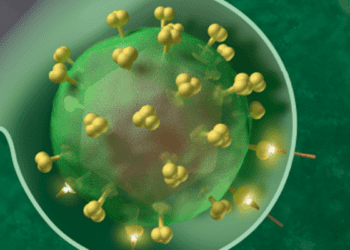Evaluation of epidural analgesia use during labor and infection in full-term neonates delivered vaginally
1. Epidural analgesia during vaginal labour was associated with an increased risk of infection among neonates
2. Further research and studies should focus on improving the safety of epidural analgesia during labour and delivery
Evidence Rating Level: 2 (Good)
Study Rundown: Epidural analgesia is a tool that has revolutionized the birth experience around the world, providing pain relief during labour and delivery. More than 2 million American women opt for this pain management strategy annually, and it has become a staple in hospitals globally. However, previous studies have found associations between maternal fever, intrauterine infections, and even neonatal sepsis with the use of epidural analgesia. Therefore, this study aimed to quantify the association between epidural analgesia and neonatal infections.
Electronic medical records of vaginal deliveries between 2013-2018 in Shanghai, China were examined. Data included maternal demographic information, medical history, labour and delivery details, as well as pathology reports, Apgar scores and neonatal outcomes. More specifically, outcomes assessed included neonatal sepsis, pneumonia, necrotizing enterocolitis, maternal fever, histologic chorioamnionitis, and postpartum hemorrhage. A total of n=19 968 women received epidural analgesia during their delivery, representing 52.8% of the total study cohort. Women were matched 1:1; those who received the epidural and those who did not. The incidence of neonatal infection was higher among the epidural recipients (n=647 neonates vs. 278 neonates). Specifically, higher rates of neonatal sepsis were found (n= 35 neonates [0.2%] vs n= 10 neonates [0.1%]; absolute risk difference, 0.1%; 95% CI, 0.1%-0.2%; RR, 3.50; 95% CI, 1.73-7.07). Furthermore, epidural analgesia was associated with maternal fever (greater than 37.5 degrees Celsius) (n= 2379 women [15.4%] vs n=577 women [3.8%]; RR, 4.12; 95% CI, 3.78-4.50) and increased incidence of histologic chorioamnionitis (n=1139 women [7.4%] vs n= 274 women [1.8%]; RR, 4.08; 95% CI, 3.59-4.64) compared to the no epidural analgesia group.
When analyzing these results, the sensitivity analyses were comprehensive and adjusted for variables such as labour duration. Additionally, a strength of the study was that the nurses and neonatologists who cared for the neonates and mothers were not intentionally made aware whether or not the woman had received the epidural thus, eliminating biases. On the other hand, it is worth noting that the overall incidence of neonatal infection was low, even in the epidural analgesics cohort. Therefore, it is important to highlight that epidural analgesics are still relatively safe and should not be dismissed as an unsafe option during birth. Rather, future research should be encouraged in order to increase safety and efficacy of labour and delivery epidural analgesics.
Click to read the study in JAMA Obstetrics and Gynecology
Relevant Reading: Comparison of labour and birth outcomes between nulliparous women who used epidural analgesia in labour and those who did not: A prospective cohort study
In-Depth [retrospective cohort]: This cohort study included 37 786 full-term nulliparous women delivering vaginally between 2013 and 2018 in Shanghai, China. Within 3 days of birth, babies were assessed for neonatal infection including sepsis, pneumonia, and necrotizing enterocolitis. Furthermore, maternal health was assessed for fever, histologic chorioamnionitis,a and postpartum hemorrhage. Of the total cohort, n=19 968 (52.8%) received epidural analgesia. Individuals were matched 1:1 to women who did not receive epidural analgesia. The epidural analgesic group had a higher incidence of neonatal infection ( 674 neonates [4.4%] vs 278 neonates [1.8%]. This translated to an absolute risk difference of 2.6%; 95% CI, 2.2%-3.0% and a relative risk (RR) of 2.43; 95% CI, 2.11-2.78. Individuals in this cohort (receiving the epidural analgesia) also experienced higher rates of sepsis (absolute risk difference, 0.1%, 95% CI, 0.1%-0.2%; RR, 3.50; 95% CI, 1.73-7.07) compared to those who did not receive the epidural. Finally, rates of maternal fever and histologic chorioamnionitis were increased as well with the use of epidural analgesia (RR of 4.12 and 4.08 respectively).
Image: PD
©2021 2 Minute Medicine, Inc. All rights reserved. No works may be reproduced without expressed written consent from 2 Minute Medicine, Inc. Inquire about licensing here. No article should be construed as medical advice and is not intended as such by the authors or by 2 Minute Medicine, Inc.









